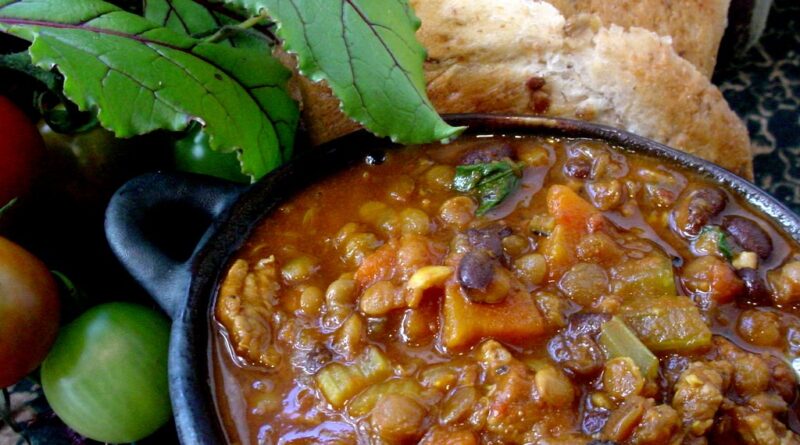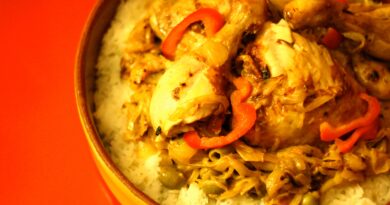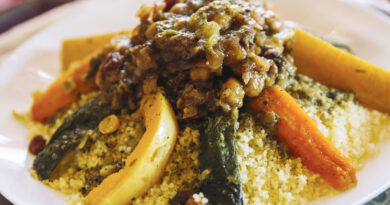Harira
Harira: Exploring the Heart and Soul of Moroccan Cuisine
In the bustling markets and vibrant kitchens of Morocco, amidst the fragrant spices and colorful array of ingredients, one dish reigns supreme as a symbol of hospitality, tradition, and culinary artistry – Harira. This hearty and aromatic soup holds a special place in Moroccan culture, serving as a staple during Ramadan, a comforting meal for family gatherings, and a beloved taste of home for Moroccans around the world. As we embark on a culinary journey to unravel the origins, ingredients, and significance of Harira, we uncover the rich tapestry of flavors and traditions that make it a cherished part of Moroccan cuisine.
Roots and Origins: Tracing the History of Harira
Harira’s roots can be traced back centuries to the diverse influences that have shaped Moroccan cuisine over the ages. The name “Harira” is derived from the Arabic word “hrira,” which means “to shred” or “to tear,” reflecting the soup’s thick and hearty texture. While the exact origins of Harira are uncertain, it is believed to have originated in the Maghreb region of North Africa, where it evolved from a simple peasant dish into a culinary masterpiece.
Historically, Harira has been associated with the month of Ramadan, the holiest month in the Islamic calendar, during which Muslims fast from dawn until sunset. Harira serves as the traditional soup to break the fast, providing nourishment and sustenance after a day of abstaining from food and drink. Over time, Harira has become synonymous with the spirit of Ramadan, symbolizing community, generosity, and the joy of breaking bread together.
Ingredients and Preparation: Crafting the Perfect Harira
At its core, Harira is a robust and flavorful soup made from a base of tomatoes, lentils, and chickpeas, simmered with a fragrant blend of spices and herbs. While the exact recipe for Harira can vary from region to region and from family to family, certain key ingredients are essential to its distinctive taste and texture.
Tomatoes form the foundation of Harira, providing a rich and tangy base for the soup. Lentils and chickpeas add protein and substance, while onions, celery, and parsley contribute depth of flavor. Aromatic spices such as cinnamon, ginger, turmeric, and pepper lend warmth and complexity to the soup, while a squeeze of lemon juice adds a refreshing citrus note.
The preparation of Harira is a labor of love, requiring patience, attention to detail, and a keen sense of balance. The lentils and chickpeas are soaked overnight to soften, then cooked until tender. Meanwhile, the tomatoes are sautéed with the onions, celery, and spices to create a fragrant base. Once the lentils and chickpeas are cooked, they are added to the tomato mixture along with water or broth, and the soup is simmered until thickened to perfection.
Cultural Significance: Harira as a Symbol of Moroccan Hospitality
In Moroccan culture, food is more than just sustenance; it is a form of art, a means of expression, and a gesture of hospitality. Harira embodies these values, serving as a symbol of warmth, generosity, and welcome. It is often served as the first course of a traditional Moroccan meal, accompanied by crusty bread and a selection of mezze (appetizers), olives, and mint tea.
During Ramadan, Harira takes on added significance as the soup of choice for breaking the fast. Families gather together to share the iftar meal, beginning with a bowl of Harira followed by an assortment of savory and sweet dishes. The act of breaking bread together fosters a sense of unity and solidarity, reinforcing the bonds of family and community.
Health Benefits: Exploring the Nutritional Value of Harira
Beyond its cultural significance, Harira is prized for its nutritional benefits and healthful properties. Packed with protein, fiber, vitamins, and minerals, Harira is a wholesome and nourishing meal that provides sustained energy and satiety. Lentils and chickpeas are excellent sources of plant-based protein and complex carbohydrates, while tomatoes and spices offer antioxidants and anti-inflammatory compounds.
Moreover, Harira is low in fat and calories, making it a healthy option for those seeking to maintain a balanced diet. Its hearty and satisfying nature makes it particularly well-suited for vegetarians and vegans, as well as anyone looking to incorporate more plant-based foods into their meals.
Global Influence: Harira Beyond Moroccan Borders
In recent years, Harira has gained popularity beyond the borders of Morocco, finding its way onto the menus of restaurants and homes around the world. Its bold flavors, nourishing ingredients, and cultural significance have captivated the palates of food enthusiasts seeking authentic and flavorful dishes.
Moreover, the rise of global travel and culinary tourism has sparked interest in traditional and regional cuisines like Moroccan. Travelers are drawn to the vibrant flavors and exotic spices of Moroccan cuisine, with Harira serving as a quintessential taste of the country’s culinary heritage.
Preserving Tradition: Embracing the Legacy of Harira
As we celebrate the culinary heritage of Morocco and the enduring appeal of Harira, it is essential to recognize the importance of preserving and promoting traditional dishes in an ever-changing world. In an age of fast food and globalization, Harira serves as a reminder of the value of slow food, artisanal craftsmanship, and cultural authenticity.
By embracing and sharing dishes like Harira, we not only honor the culinary traditions of the past but also support local farmers, artisans, and communities who keep these traditions alive. As we savor each spoonful of savory soup and each bite of tender lentils and chickpeas, we pay homage to the timeless artistry and enduring legacy of Moroccan cuisine.
In conclusion, Harira is more than just a soup; it is a celebration of tradition, taste, and togetherness. From its humble origins in the markets and kitchens of Morocco to its newfound popularity on the global culinary stage, Harira embodies the spirit of culinary exploration and cultural exchange. As we indulge in its rich flavors and aromatic spices, let us savor not only the soup but also the stories, heritage, and traditions that make Harira a true culinary masterpiece.



